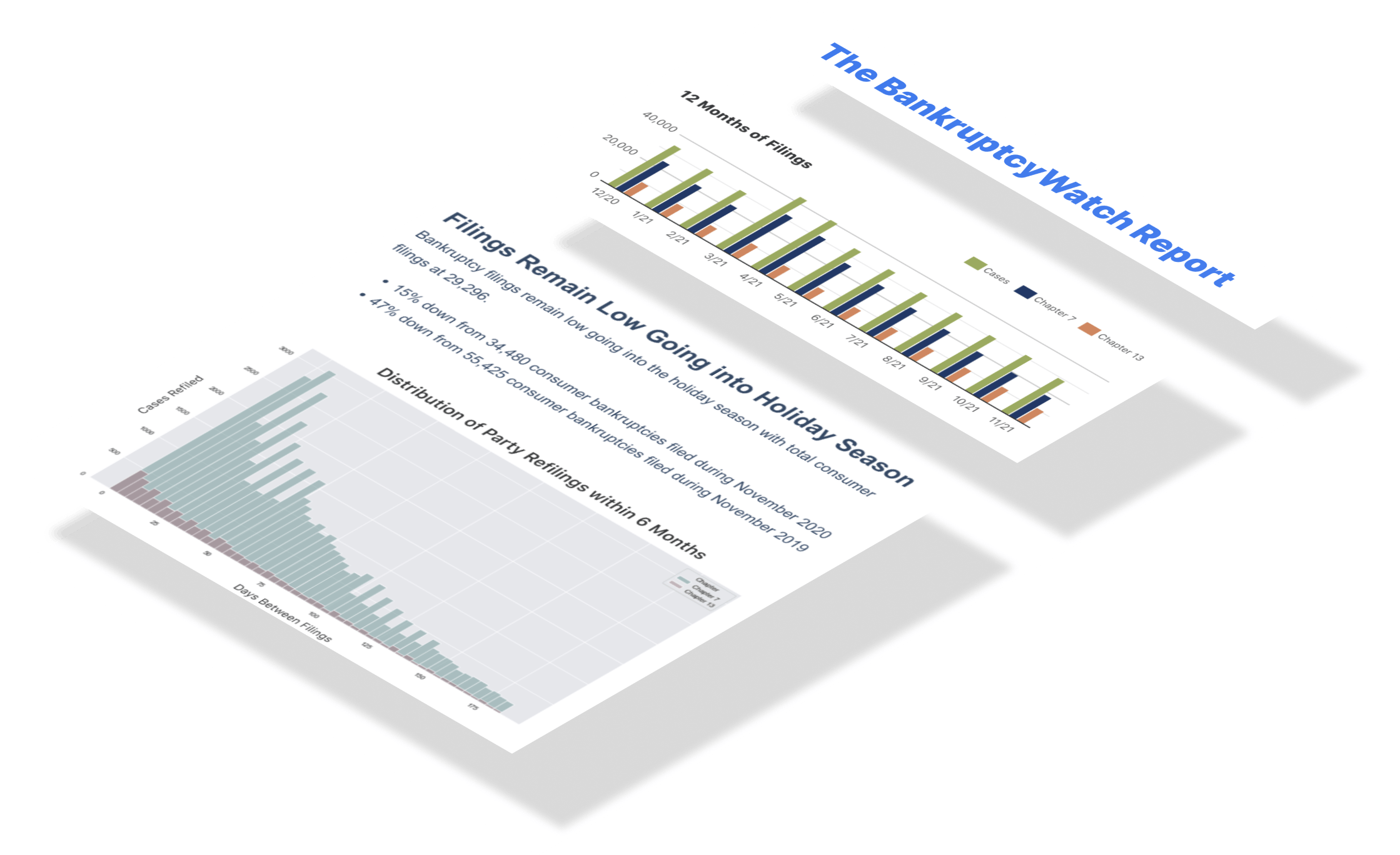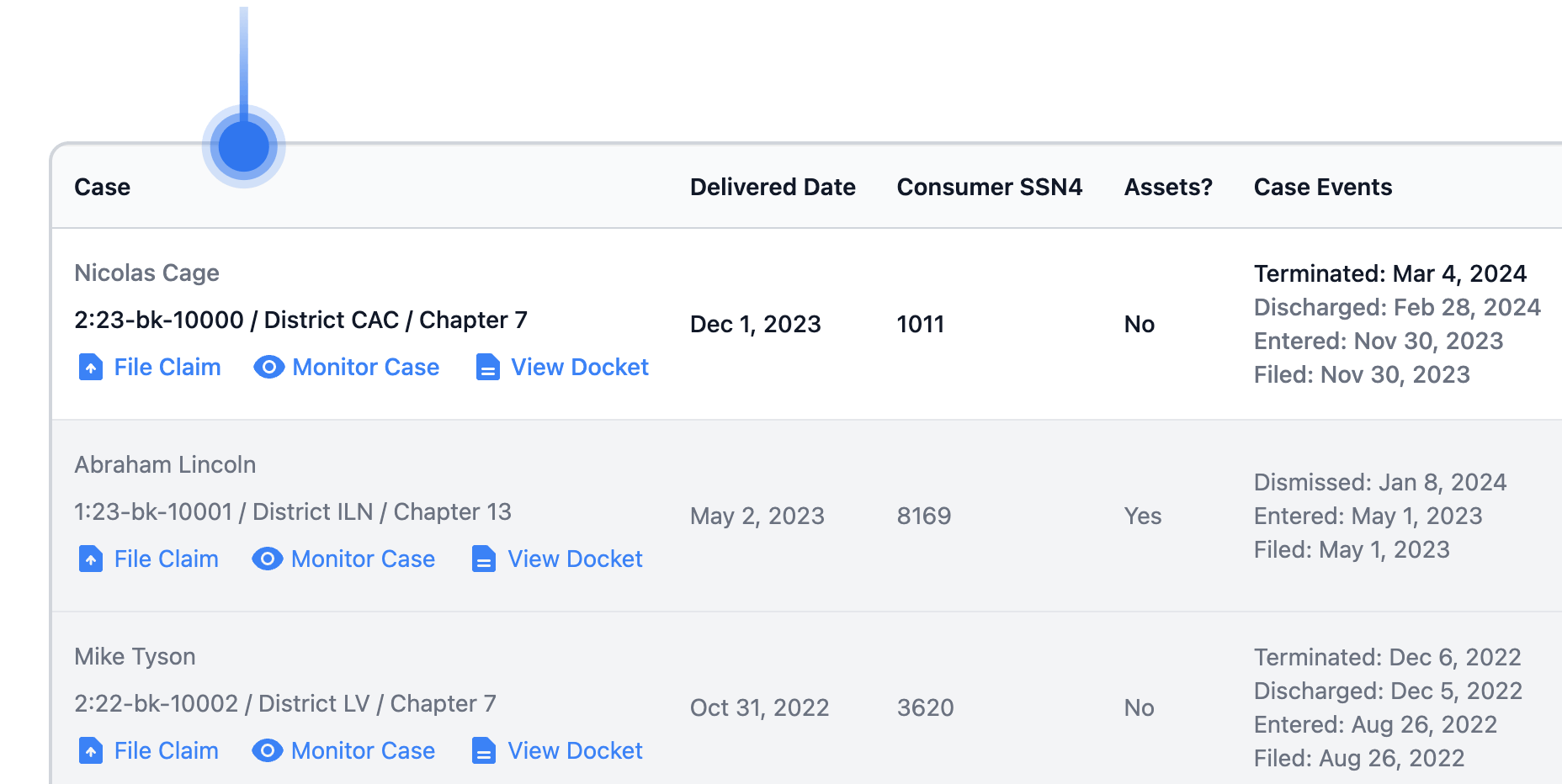Claude 4.0 Sonnet Extended Analysis of the Bankruptcy Statistics
1. Overview of this week's National filings. Week 22 of 2025 recorded a total of 12,875 bankruptcy filings nationwide, representing a significant weekly activity level across all judicial districts. Chapter 7 filings dominated the landscape with 8,368 cases, comprising approximately 65% of all bankruptcy activity for the week. Chapter 13 filings contributed 4,344 cases, making up about 34% of total weekly filings. Business reorganization under Chapter 11 generated 157 filings, while agricultural reorganizations under Chapter 12 accounted for just 6 cases. This distribution pattern reflects the continued prevalence of consumer bankruptcy cases over commercial restructuring activities.
2. An interesting fact about this week's filings. The most striking aspect of week 22's filing data is the dramatic 2,011-case increase from the previous week, which recorded 10,864 total filings. This represents an 18.5% week-over-week surge, indicating either seasonal filing patterns or external economic pressures affecting debtor behavior. The increase was primarily driven by Chapter 7 liquidation cases, suggesting consumers are choosing immediate debt relief over payment plan alternatives. Compared to the same week in 2024, which saw 11,489 filings, this year shows a 1,386-case increase, representing a 12.1% year-over-year growth. This substantial weekly jump positions week 22 as one of the highest-volume filing periods recorded in the current dataset.
3. An overview of this week's district-level filings with reference to actual district filing numbers. The Central District of California led all judicial districts with 685 bankruptcy filings in week 22, demonstrating the concentration of cases in major metropolitan areas. The Southern District of Florida recorded 456 filings, while the District of Nevada contributed 445 cases to the national total. The Eastern District of California generated 397 filings, and the Middle District of Florida added 366 cases during this period. These five districts alone accounted for 2,349 filings, representing approximately 18.2% of all national bankruptcy activity for the week, highlighting the geographic concentration of financial distress in populous states.
4. Geographic (district) disparities in filings. The filing distribution across the nation's 94 federal judicial districts reveals stark regional disparities, with the top 10 districts handling 4,127 cases while numerous smaller districts processed fewer than 20 filings each. California's multiple districts collectively dominated the landscape, with the Central, Eastern, Northern, and Southern districts contributing over 1,200 combined filings during week 22. Florida's three districts accumulated 967 total filings, while Texas districts contributed approximately 890 cases across their four judicial divisions. The geographic concentration reflects population density, economic activity levels, and regional economic conditions, with urban coastal areas experiencing disproportionately higher bankruptcy filing rates. Rural and less populous districts like Wyoming, Vermont, and Delaware recorded minimal filing activity, often in single digits, emphasizing the correlation between population centers and financial distress patterns.
5. Current year focus. Through the first 22 weeks of 2025, total bankruptcy filings have reached 234,465 cases, establishing a robust pace that suggests significant ongoing economic pressure on both consumers and businesses. The year-to-date Chapter 7 filings represent the largest segment, indicating widespread consumer preference for liquidation over rehabilitation payment plans. Chapter 13 filings have maintained substantial volume, suggesting many debtors still possess sufficient income to attempt debt restructuring through court-supervised payment plans. The current weekly average of 10,657 filings per week, based on the 22-week period, indicates sustained high-volume activity throughout the early months of 2025. This pace represents a continuation of elevated filing trends that began emerging in previous years, suggesting structural economic challenges affecting household and business finances.
6. Comparative analysis with previous years. Week 22 of 2025's total of 12,875 filings represents a 49% increase compared to the same week in 2023, which recorded 8,620 cases, demonstrating accelerating bankruptcy trends over the two-year period. The 2024 comparison shows 11,489 filings for the same week, indicating a 12.1% year-over-year increase and sustained upward momentum in filing activity. Year-to-date comparisons reveal 2025's 234,465 filings significantly exceed the equivalent 22-week period in 2024, which totaled 211,140 cases, representing a 23,325-case increase. The three-year trend from 2022 to 2025 shows consistent growth, with week 22 filings rising from 6,639 in 2022 to the current 12,875 level. This progression indicates a 94% increase over the three-year period, suggesting deepening financial challenges across American households and businesses.
7. Analyzing the filings per capita. Based on the current U.S. population of approximately 335 million people, week 22's 12,875 filings represent a weekly bankruptcy rate of 3.8 filings per 100,000 Americans. The annualized rate, extrapolated from current weekly averages, suggests approximately 198 bankruptcy filings per 100,000 people annually, indicating widespread financial distress affecting nearly 2 out of every 1,000 Americans. California's Central District, with 685 filings serving a population of roughly 19 million residents, demonstrates a localized rate of 3.6 filings per 100,000 people for just that single week. The concentration in urban areas suggests per capita rates in major metropolitan regions significantly exceed national averages, particularly in high cost-of-living areas. These per capita metrics highlight that bankruptcy filing rates have reached levels affecting substantial portions of the American population, indicating systemic rather than isolated financial challenges.
8. Analyzing the changing filings per capita. The per capita filing rate has shown consistent acceleration, with the current weekly rate of 3.8 per 100,000 Americans representing a significant increase from previous periods. Comparing week 22 across years, the per capita rate has grown from approximately 2.0 per 100,000 in 2022 to the current 3.8 level, nearly doubling over the three-year span. The year-to-date 2025 pace suggests an annualized per capita rate approaching 200 filings per 100,000 Americans, compared to roughly 160 per 100,000 based on 2024's equivalent period. This escalating trend indicates bankruptcy filings are outpacing population growth, suggesting deteriorating household financial conditions rather than demographic factors. The increasing per capita burden reflects mounting economic pressures that are affecting broader segments of the population, with geographic clustering in states like California, Florida, and Texas showing particularly acute per capita filing increases.
9. Forecast the expected filing numbers for the rest of the year. Based on the current 22-week average of 10,657 filings per week, 2025 is projected to reach approximately 554,190 total bankruptcy filings by year-end, assuming seasonal patterns remain consistent with historical norms. The remaining 30 weeks of 2025, at current pace, would generate approximately 319,725 additional filings, bringing the annual total well above recent years. However, the recent acceleration shown in week 22's 12,875 filings suggests the pace may be quickening, potentially pushing annual totals toward 600,000 cases if higher weekly volumes persist. Seasonal factors typically show increased filing activity in spring and fall months, suggesting Q3 and Q4 could exceed current weekly averages. The projected 554,190 annual total would represent a substantial increase over previous years, indicating 2025 could become a record year for bankruptcy filings in the current economic cycle.
10. Forecast the trends of increasing filings after 2024. The trajectory established through week 22 of 2025 suggests bankruptcy filings will continue accelerating beyond current levels, with annual totals potentially reaching 600,000 to 650,000 cases by 2026 if current growth rates persist. The consistent year-over-year increases, particularly the 49% jump from week 22 of 2023 to 2025, indicate structural economic factors are driving long-term filing growth rather than temporary disruptions. Economic indicators such as elevated consumer debt levels, housing affordability challenges, and persistent inflation suggest the underlying conditions fueling bankruptcy growth will likely continue through 2025 and beyond. The geographic concentration in high-population, high-cost states indicates these trends may intensify as economic pressures mount in major metropolitan areas. Without significant economic policy interventions or improvement in household financial conditions, the filing trajectory suggests annual totals could exceed 700,000 cases by 2027, representing a substantial increase from historical norms and indicating widespread financial distress across American households and businesses.






